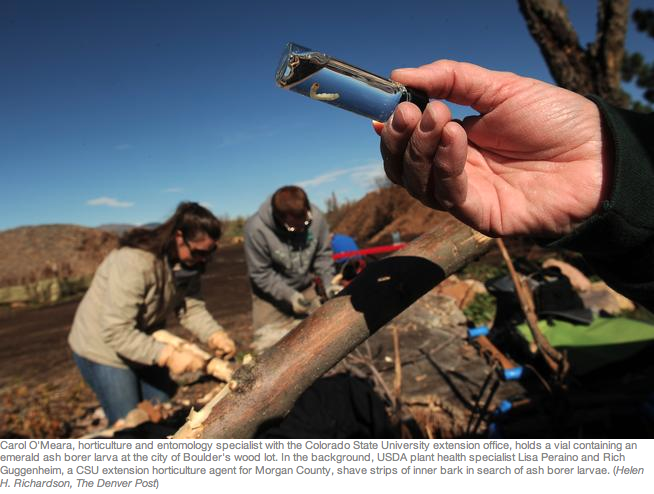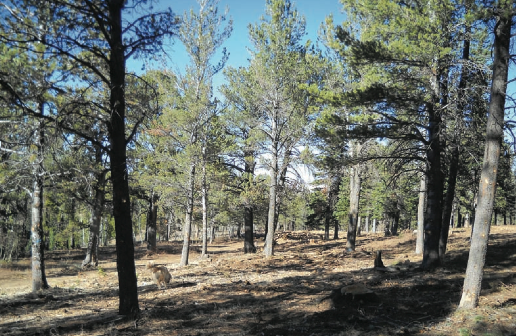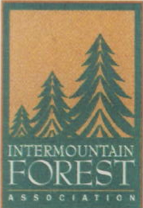
What do Forest Fires Really Cost?
A seven-year quest to estimate forest fire costs in Colorado revealed a number of losses not usually considered. Catastrophic fires result in direct costs, rehabilitation costs, impact costs, and special value losses. They are wildfire events that imperil public health, safety, or welfare and result in significant degradation of the environment, substantial loss of property, and often death or injury of people. While each fire is unique, a series of large fire case studies, primarily in ponderosa pine forests, are used to develop a progression of cost estimates. The author concludes that damages to forest watershed values in the arid West may ultimately result in the most serious, long-term costs of large fires. A contrasting case study where fire has been a regular component of the forest ecosystem is used to question the tacit acceptance of very costly, extremely damaging catastrophic fires as natural events.
Read the full report: What do Forest Fires Really Cost?

New Tool To Track Forests
Check out this cool mapping tool developed to track changes in forests across the globe. Read this NY Times article for a little background.

Emerald ash borer puts Colorado tree experts on alert
This insect … makes all other insects look beneficial
Read the full Denver Post article about the discovery of the emerald ash borer in Boulder County and what the implications are for Colorado.

Legislature Won’t Immediately Consider Fees for WUI Homeowners
Take a listen to this story on Colorado Public Radio to learn more about the current direction of wildfire-urban interface (WUI) legislation in Colorado.

Continuity & Momentum in the Aftermath of Wildfire – Woodland Park Firewise Communities
Examples of this perseverance in the face of catastrophe abound among our Firewise brethren. For example, in response to last year’s Waldo Canyon Fire, which destroyed nearly 300 homes in Colorado, community activists Bonnie Sumner and Scott Lord led their respective communities (Majestic Park and Forest Edge County Ridge Estates) in stepping up their local efforts. Sumner recalls attending a remembrance marking the 10-year anniversary of the 2002 Hayman Fire, where she picked up information about Firewise principles. Three days later, the Waldo Canyon Fire struck.
Read the full article in the Fall 2013 Firewise How-To Newsletter

How Healthy Are Our Forests?
Each year, the Report on the Health of Colorado’s Forests provides information to the Colorado General Assembly and citizens of Colorado about the health and condition of forests across the state. In addition to providing a comprehensive overview of the current health of Colorado’s forests, this year’s report also includes sidebars that highlight the ongoing management and stewardship of our forests. These forest management actions help sustain production of wood and non-timber products, support Colorado communities and economies, and ensure the health and diversity of Colorado’s forests for current and future generations.
Read the full 2012 Report on the Health of Colorado’s Forests

Wildfire Insurance & Forest Health Task Force Report
Governor John Hickenlooper created the Task Force on Wildfire Insurance and Forest Health through Executive Order B 2013-002. The group was asked to identify and reach agreement on ways to encourage activities, practices and policies that would reduce the risk of loss in wildland-urban interface (WUI) areas and provide greater customer choice and knowledge of insurance options.
Take a look at the full report.
Recommendations Include:
- Update Colorado Wildfire Risk Assessment Portal (CO-WRAP) to identify and quantify risk to specific properties in the Wildland Urban Interface (WUI)
- Disclose CO-WRAP scores to stakeholders
- Amend standard real-estate contract form to include disclosure of CO-WRAP score
- Create process for appeals/updates of CO-WRAP scores
- Require Wildfire Mitigation Audits for high risk homes
- Develop and disseminate uniform Best Management Practices (BMPs)
- Implement state-wide model ordinance
- Prohibit inconsistent community building or land use requirements
- Create pilot program for prescribed burns
- Assess a fee on properties in the WUI
- Continue and enhance state grant funding
- Increase awareness of financial assistance and technical support
- Disseminate information about HB 13-1225
Task Force Recommendations – Implications for Homeowners in the WUI:
Obligations
- Obtain CO-WRAP score and Wildfire Mitigation Audit (if high risk)
- Comply with building and land use codes
- Pay property fee
Incentives for Mitigation
- State funding for mitigation
- Tax incentives
- Desire to lower insurance premiums and avoid Wildfire Mitigation Audit
Available Information
- Uniform best management practices
- Existing resources and funding options
- Homeowners Insurance Reform Act (HB 13-1225)

Forest Management & the Timber Industry
“The National Forest management program in this Region falls far short of meeting the need for hazardous fuels reduction and forest restoration. In our region alone, the U.S. Forest Service recognizes that millions of acres are in need of restoration, yet the timber target for Fiscal Year 2013, which includes both timber sales and stewardship contracts, was only about 450,000 CCF. Our states are home to re-emerging forest products businesses that can partner with the U.S. Forest Service, yet the dramatic gap between what these businesses can manage and the timber targets of the RMR endanger their viability and success just as they are about to reach a scale that could meaningfully contribute to more proactive management of forest health.” Read the full letter from Rocky Mountain Region U.S. Senators and Representatives to U.S. Secretary of Agriculture Tom Vilsack by clicking here.
Bennet to Chair Senate Hearing on Reducing Risk & Severity of Wildfires
U.S. SENATOR MICHAEL BENNET
Member: Agriculture, HELP, and Finance Committees
Bennet to Chair Senate Hearing on Reducing Risk and Severity of Wildfires
Washington, DC – Colorado U.S. Senator Michael Bennet, Chairman of the U.S. Senate Subcommittee on Conservation, Forestry and Natural Resources, will convene a Subcommittee hearing on Tuesday, November 5 at 2:30 p.m. EST in room 328 of the Russell Senate Office Building. The hearing, “Shortchanging Our Forests: How Tight Budgets and Management Decisions Can Increase the Risk of Wildfire,” will feature testimony from local Colorado business representatives from wildfire-affected areas. Jim Hubbard, the Deputy Chief of the U.S. Forest Service and former Colorado State Forester from 1984-2004, will also testify. Additional witnesses detailed below.
A live webcast of the hearing can be viewed on the Committee’s website at http://ag.senate.gov.
WITNESS LIST
Mr. Jim Hubbard, Deputy Chief, U.S. Forest Service, Washington, DC
Mr. Davey Pitcher, President and CEO, Wolf Creek Ski Area, Pagosa Springs, CO
Mr. Chris Topik, Director, Restoring America’s Forests Program, The Nature Conservancy, Washington, DC
Mr. Tom Troxel, Executive Director, Intermountain Forest Association, Rapid City, SD
Ms. Sallie Clark, Incoming Vice President, National Association of Counties, Commissioner, El Paso County, CO

Bipartisan House Bill to Proactively Reduce Wildfire Risks
“Udall’s bill and its House companion would place wildfires on par with other natural disasters such as hurricanes, floods and tornadoes, and would make Colorado and other states eligible to receive an additional 15 percent of the total funds FEMA allocates for fire suppression to support wildfire-mitigation efforts.” Read more in this press release from Senator Mark Udall’s office.


